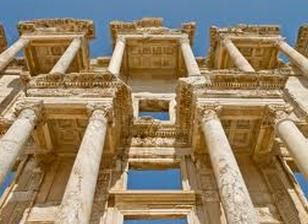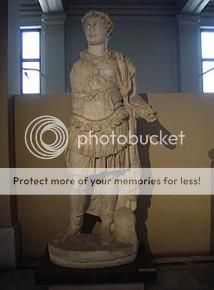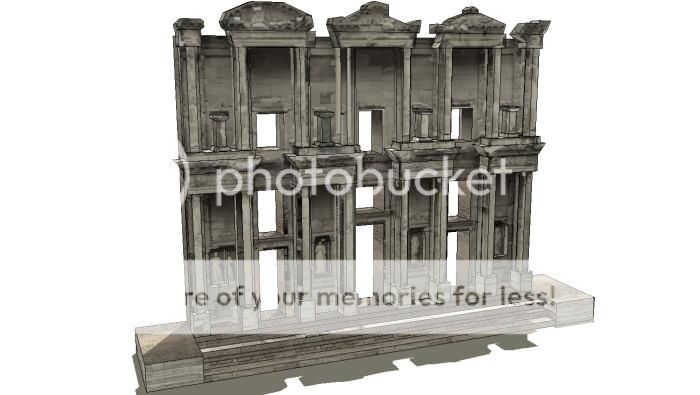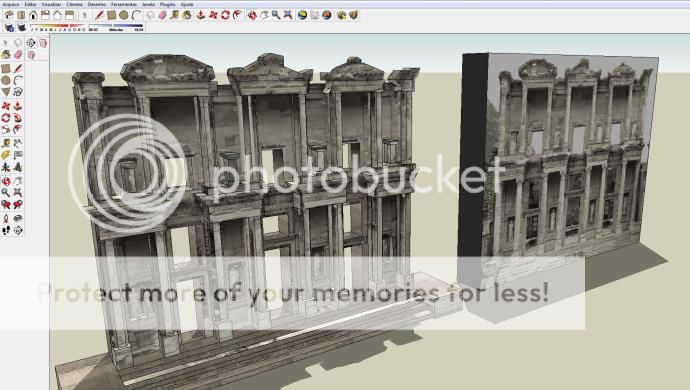This is the next project I will try to make. For now, only the model in sketchup is ready. Now I will break down the parts and see if I can organize everything. Like all real models I try to recreate it all starts with a good photo, in this case the same as that illustrates this post, below.
Este é o próximo projeto que eu tentarei fazer. Por enquanto, apenas o modelo em sketchup está pronto. Agora irei desmembrar as partes e ver se consigo organizar tudo. Como todos os modelos reais que eu tento recriar, tudo começa com uma boa foto, neste caso a mesma que ilustra este post, logo abaixo.
 |
| The Real Thing |
 The facade of the library has two-stories, with Corinthian style columns on the ground floor and three entrances to the building. There is three windows openings in the upper story. They used an optical trick that the columns at the sides of the facade are shorter than those at the center, giving the illusion of the building being greater in size. The statues in the niches of the columns today are the copies of the originals. The statues symbolize wisdom (Sophia), knowledge (Episteme), intelligence (Ennoia) and valor (Arete). These are the virtues of Celsus. The library was restored with the aid of the Austrian Archaeological Institute and the originals of the statues were taken to Ephesus Museum in Vienna in 1910. There was an auditorium ,which was for lectures or presentations between the library and the Marble Road, was built during the reign of the Emperor Hadrian. - www.ephesus.us
The facade of the library has two-stories, with Corinthian style columns on the ground floor and three entrances to the building. There is three windows openings in the upper story. They used an optical trick that the columns at the sides of the facade are shorter than those at the center, giving the illusion of the building being greater in size. The statues in the niches of the columns today are the copies of the originals. The statues symbolize wisdom (Sophia), knowledge (Episteme), intelligence (Ennoia) and valor (Arete). These are the virtues of Celsus. The library was restored with the aid of the Austrian Archaeological Institute and the originals of the statues were taken to Ephesus Museum in Vienna in 1910. There was an auditorium ,which was for lectures or presentations between the library and the Marble Road, was built during the reign of the Emperor Hadrian. - www.ephesus.us |
| An original marble statue of Celsus, from the facade, is now in the Istanbul Archaeological Museum |
 |
| The Sketchup Model |
Download not so soon...
Download não tão em breve...
More Papermau`s Next Projects related posts:
Imaginary Train Station - by Papermau - Some Updates
Los Pollos Hermanos Roadside Cafe - by Papermau - Next Project
Time Machine Discos Diorama - by Papermau - Some Advances
Old West Sheriff`s Office - Some Updates


No comments:
Post a Comment